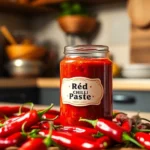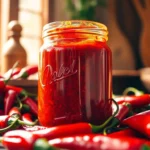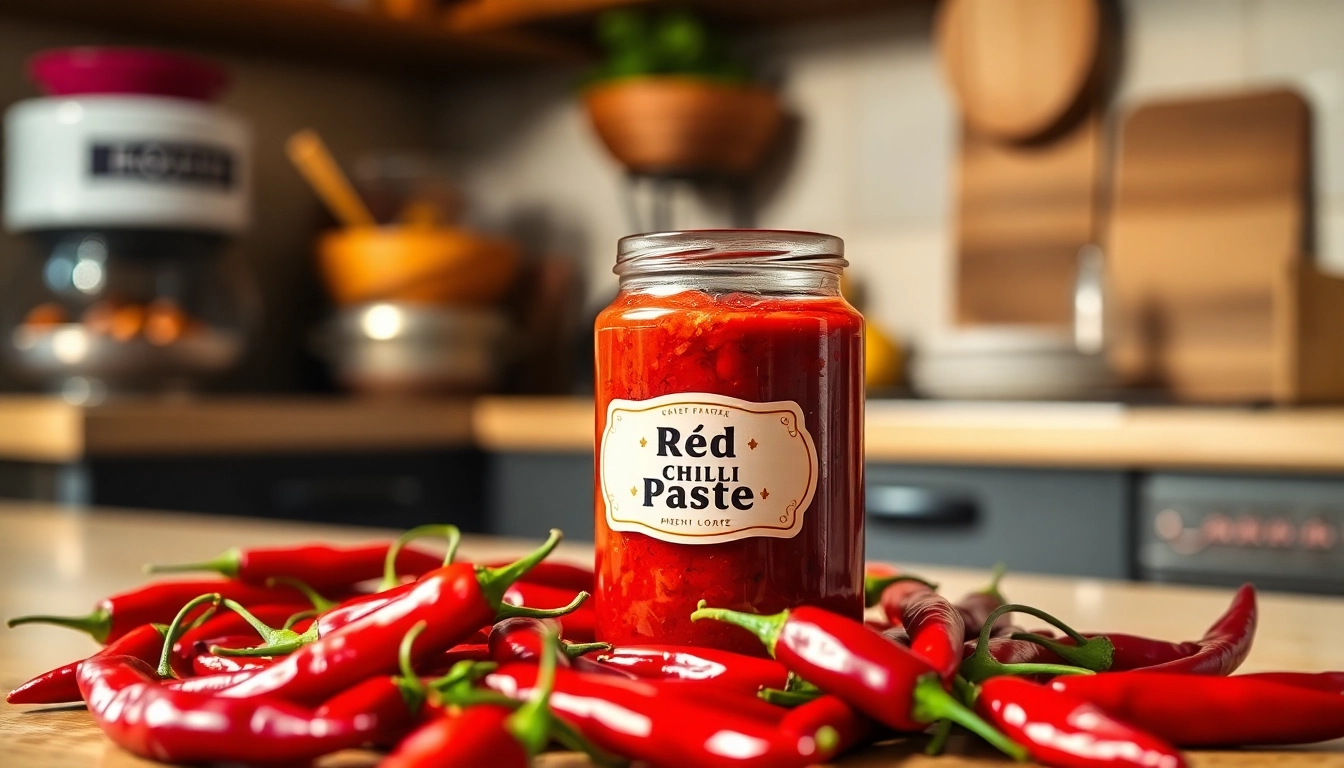Mastering the Art of Red Chilli Paste Production: A Comprehensive Guide for Global Success
Red chilli paste stands as a cornerstone ingredient in many cuisines worldwide, celebrated for its vibrant color, fiery heat, and rich aroma. For manufacturers and exporters aiming to carve a niche in the global spice market, producing high-quality, authentic red chilli paste is both an art and a science. At the heart of this process lies not only selecting the finest ingredients but also adhering to strict quality standards and innovative manufacturing techniques. To explore this in depth, visit our dedicated page on Red Chilli Paste and discover how our commitment to quality and authenticity sets us apart.
Understanding the Basics of Red Chilli Paste Production
Selection of Fresh Red Chillies for Optimal Flavor
The foundation of premium red chilli paste is the quality of the raw chillies. Selecting the right variety—such as Kashmiri, Guntur, or Thai red chillies—depends on the desired spice intensity, aroma, and color. Freshness is paramount; ripe, undamaged chillies with vibrant color ensure a concentrated flavor profile. Proper harvesting techniques, coupled with prompt processing, maintain the chillies’ natural oils and active compounds, which define the paste’s heat and aroma. Implementing a rigorous selection process, including sensory evaluation and laboratory testing for moisture content and microbial safety, guarantees only the best raw materials make their way into production.
Traditional vs Modern Chilli Paste Manufacturing Techniques
The manufacturing of red chilli paste has evolved from traditional stone grinding and manual methods to advanced, automated processes. Traditional techniques, such as mortar and pestle or grinding stones, preserve authentic flavors and textures but lack scalability and consistency. Modern machinery, including high-capacity grinders and blenders equipped with sterilization features, enhances efficiency while maintaining hygiene standards. Hybrid approaches—where traditional methods are integrated with modern equipment—can yield products with authentic taste and consistent quality. For instance, continuous-flow grinding systems with temperature controls prevent overheating, preserving optimal aroma and heat. Researchers and manufacturers increasingly favor such advanced techniques to meet international quality standards and large-volume demands.
Essential Equipment and Tools for Quality Control
Achieving uniformity and safety in red chilli paste production mandates the use of specialized equipment: hygienic grinding machines, sterilizers for equipment sanitization, and moisture analyzers to maintain precise levels. Quality assurance labs equipped with chromatography and microbiological testing facilities are critical for verifying active constituents and microbial safety. Incorporating Continuous Quality Improvement (CQI) protocols—such as Hazard Analysis and Critical Control Points (HACCP) and Good Manufacturing Practices (GMP)—ensures consistent product excellence. Automation and real-time monitoring not only optimize production efficiency but also facilitate traceability, crucial for meeting export compliance standards.
Ingredients, Formulation, and Quality Assurance
Balancing Spiciness and Aroma in Red Chilli Paste
The perfect red chilli paste balances pungency with a rich, smoky aroma. This requires meticulous formulation—moderating the amount of seeds and membranes, which contain most of the capsaicin, to achieve the desired heat level. Complementing chillies with other ingredients like garlic, vinegar, and salt enhances flavor stability and preserves aroma. Expert formulators often conduct sensory evaluations and taste tests across batches, adjusting ratios based on regional preferences and target markets. Advanced flavor profiling using gas chromatography-mass spectrometry (GC-MS) can further optimize formulations for consistent sensory qualities.
Importance of Organic and Certified Ingredients
With global consumer trends leaning towards organic and sustainably sourced foods, sourcing certified organic chillies and ingredients significantly enhances marketability. Certifications such as USDA Organic, EU Organic, and Indian NPOP assure consumers of product purity and environmentally sustainable practices. Certification involves adherence to strict standards—chemical-free cultivation, non-GMO practices, and no synthetic additives—additional steps that boost consumer confidence and expand export opportunities. Our commitment to organic sourcing ensures our red chilli pastes stand out in competitive markets, promoting health-conscious consumption and environmental responsibility.
Implementing Stringent Quality Checks and Certifications
High-quality manufacturing requires rigorous quality checks at every stage—from raw material sourcing to final packaging. Implementing ISO standards, FSSC 22000 certification, and HACCP protocols ensures safety, hygiene, and consistency. Multi-tiered testing includes microbial analysis, heavy metal detection, pesticide residue testing, and organoleptic assessments. Traceability systems track each batch, providing transparency and compliance with international export standards. Regular audits and employee training reinforce the importance of quality and safety, thereby building trust with global partners and consumers.
Packaging, Preservation, and Export Considerations
Innovative Packaging Solutions to Preserve Freshness
Packaging plays a crucial role in maintaining the freshness, flavor, and safety of red chilli paste during transit and storage. Modern packaging options include vacuum-sealed jars, metal cans with airtight seals, and laminated pouches that prevent oxygen exposure. Additionally, employing nitrogen flushing during filling displaces oxygen, significantly extending shelf life. Transparent, tamper-evident packaging instills consumer confidence, while eco-friendly, biodegradable materials address growing environmental concerns. Customized packaging tailored to regional preferences—such as spice label designs, multilingual labels, and tamper-proof caps—can boost product appeal in diverse markets.
Storage Guidelines to Maximize Shelf Life
Proper storage conditions are vital to preserve the quality of red chilli paste. Cool, dry, and hygienic environments—preferably below 25°C with controlled humidity—are recommended. Once opened, refrigeration extends shelf life while preventing microbial growth. Manufacturers should include clear storage instructions on labels, emphasizing avoid exposure to sunlight and moisture. Implementing continuous quality monitoring during storage, including periodic microbial testing and sensory evaluations, ensures the product remains fresh and safe until its expiration date.
Adhering to International Export Standards and Regulations
Exporting red chilli paste involves complying with stringent standards set by importing countries. These may include certifications such as FDA registration, Halal and Kosher approvals, and compliance with specific packaging and labeling laws. Understanding the Food Safety Modernization Act (FSMA), European Food Safety Authority (EFSA) regulations, and other regional mandates is essential. Engaging export compliance consultants and participating in trade fairs such as Biofach and other international food expos helps stay updated. Additionally, quality documentation, including Certificates of Analysis (COA) and phytosanitary certificates, streamline customs clearance and bolster credibility in global markets.
Market Trends and Consumer Preferences
Emerging Global Markets for Red Chilli Paste
The global demand for authentic, high-quality red chilli paste is expanding beyond traditional markets such as India and Southeast Asia to Europe, North America, and the Middle East. Increasing popularity of Indian, Mexican, and Thai cuisines fuels this growth. Countries with rising spice consumption—like the United States, Germany, and Australia—are witnessing an influx of brands that emphasize organic, gluten-free, and preservative-free options. Developing strategic partnerships and participating in top trade shows, such as Biofach and Food & Beverage International Exhibitions, can unlock new avenues for exports.
Consumer Trends Toward Organic and Authentic Flavors
Modern consumers prioritize health, wellness, and authenticity. This shift fosters demand for organic, non-GMO, and additive-free red chilli pastes. Transparency in sourcing and production, along with certifications, enhances brand trust. Additionally, regional flavor variants catering to diverse palates—smoky, mild, hot—allow brands to segment their offerings. Providing transparent information about ingredients and production processes on packaging further aligns with this consumer preference.
Effective Branding and Positioning Strategies
Successful brands leverage storytelling—highlighting heritage, organic credentials, and authentic recipes—to connect with consumers. Using attractive, eco-friendly packaging, along with digital marketing, enhances visibility. Engaging in tastings, demos, and participating in international trade shows, like those Spice Nest exhibits at Biofach, establish brand presence. Emphasizing certifications and sustainability in branding communicates quality and responsibility, crucial elements for success in competitive markets.
Case Studies and Success Stories of Leading Manufacturers
Innovative Approaches from Top Exporters
Leading spice manufacturers, including Spice Nest, have successfully combined tradition with innovation. Employing modern processing techniques while preserving authentic flavors has enabled them to meet international standards and scale production. Some firms incorporate organic certifications, robust traceability systems, and eco-friendly packaging—creating a compelling value proposition that resonates globally. For example, Spice Nest’s showcase at Biofach 2024 demonstrated their commitment to quality, innovation, and sustainability—leading to increased export orders and brand recognition.
Lessons Learned from Industry Challenges
Common challenges include maintaining consistency across batches, navigating complex export regulations, and competing against low-cost counterfeit products. Solutions involve implementing advanced quality control protocols, engaging local certification authorities, and strengthening supply chain management. Transparency with stakeholders and continuous product innovation are key to overcoming market challenges. Learning from these experiences enhances resilience and adaptability in dynamic global markets.
Future Opportunities in the Red Chilli Paste Segment
Emerging segments like organic, gluten-free, and specialty spicy pastes offer growth potential. The increasing popularity of gourmet and artisanal products allows brands to diversify offerings. Technology, such as AI-driven flavor profiling and blockchain for traceability, can optimize production and build consumer trust. Future collaborations with foodservice providers, retail chains, and international distributors will further expand market reach.









